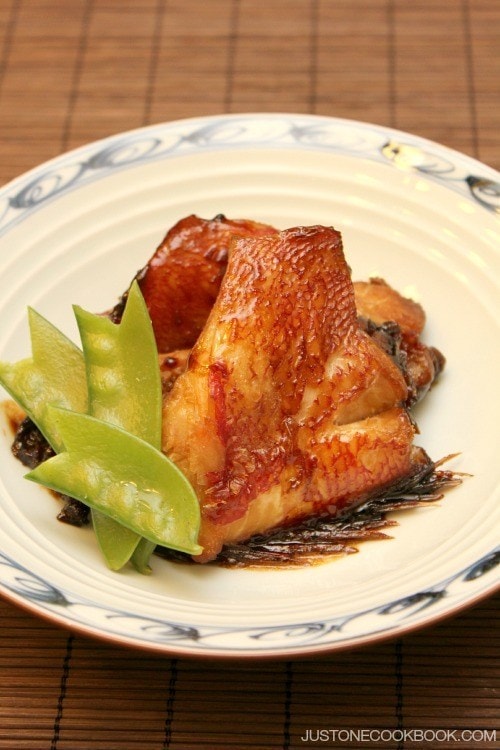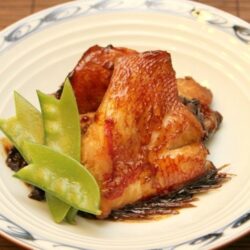
My family loves fish. My son was still 2 years old when he accidentally ate a fishbone and knew how to separate it from the fish inside his mouth. And it was a piece of cake for him. Now my daughter who’s 2 years old enjoys eating fish, and sometimes my husband and I can’t have any share. Today I share one of the traditional Japanese fish dishes.
Wish to learn more about Japanese cooking? Sign up for our free newsletter to receive cooking tips & recipe updates! And stay in touch with me on Facebook, Pinterest, YouTube, and Instagram.
Kinmedai Nitsuke (Braised Alfonsino)
Ingredients
- ½ lb kinmedai (alfonsino) (fillet, rinsed under cold water and patted dry with paper towels)
Instructions
To Blanch the Kinmedai
- In a medium saucepan over medium heat, bring to a boil enough water to just cover the kinmedai.
- Once boiling, place ½ lb kinmedai (alfonsino) in the boiling water. Remember, you do not need to cook the fish here.
- As soon as the fish’s surface becomes white, remove it from the pan and run under cold water. Pat dry the fish with a paper towel. Discard the cooking water and quickly rinse the saucepan.
To Simmer the Kinmedai
- In the same saucepan, combine ⅓ cup sake, 2 Tbsp mirin, 1 Tbsp sugar, and 2 Tbsp soy sauce, and bring to a boil over medium heat.
- Once boiling, reduce the heat to medium low. Then, add the fish and 2 slices ginger. Place an otoshibuta (a drop lid) on top of the fish and simmer for 7–8 minutes (depending on the thickness of the fish).
- Stay around the kitchen to make sure the sauce doesn‘t evaporate too fast. Add a little bit of water if the sauce is low. Spoon the sauce over the fish a few times.
- Carefully lift the fish onto a serving plate and spoon some of the sauce over the fish. Enjoy!
To Store
- You can keep the leftovers in an airtight container and store in the refrigerator for up to 2 days.
Nutrition
Did you make this recipe?
Tag @justonecookbook on Instagram so we can see your delicious creation!


